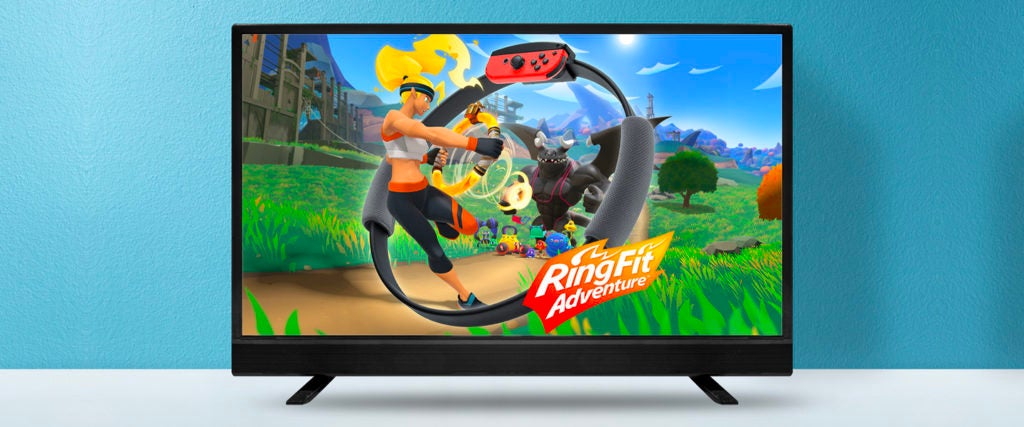Cross my heart, when I bought a Nintendo Switch for my wife as a Christmas present a few years ago, I fully intended for her to be the primary (if not sole) user of it. I even went so far as to include Mario Kart and Super Smash Bros. Ultimate with it because I knew those were her two favorite childhood gaming franchises. But despite my pristine intentions, I soon began to monopolize the Switch as I endeavored to free all of gaming’s greatest characters from the “World of Light.”
A year later, living during the heart of the pandemic and feeling overrun with guilt for having monopolized her video game system, I purchased Ring Fit Adventure for my wife in the hopes that I could simultaneously help her train and enable her to gravitate toward the Switch.
Well, guess what? My wife began training with Ring Fit Adventure every day in exercises that consisted of running in place, while squeezing, pulling and tugging on a tension ring, and using her fitness movements to blast away at the many enemies who appeared on our TV. She adored the game, and the biggest surprise of all is that my darling wife — a multi-time NCAA All-American swimmer — was thoroughly gassed as a result of the energy she expended while playing it.
That game looks cool! Does it actually work?
This is a tough one. I have to say yes. Having said that, answering this question puts me in a tight spot, because I want my wife to still enjoy using our Switch, and I also want to be completely transparent about what this game (and others like it) can and can’t do for you.
Let’s start by breaking down what the in-game training and its workouts actually consist of. The foundation for the entire Ring Fit system can be summed up in one word: “tension.” The edges of the ring can be pressed together, or tugged apart, and the game uses assorted algorithmic measurements to determine how hard you’re pushing and pulling, and how long you’re maintaining the effort. As your on-screen avatar jogs through idyllic locales like city parks, and then breaks up monster-family picnics by slaughtering the creatures it encounters, you’ll be stationed in front of your television straining to maintain a semi-squat position while pressing the ends of the tension ring together to work your various muscle groups at an assortment of angles.
Please keep in mind, the ring itself is virtually weightless, so all of the muscle contraction and engagement is accomplished through the creative application of isometric tension.
Does isometric tension actually build muscle?
The time-under-tension model has proven to be very effective in stimulating muscle growth. However, the foremost study in this area compared muscle responses when performing slow and fast-moving repetitions using the same weight, and obviously found that there was more overall muscle engagement when the same weight was moved slowly as opposed to quickly. It didn’t compare the effective muscle recruitment involved in moving a relatively heavy weight quickly with the recruitment involved in squeezing a relatively weightless object.
In the case of Ring Fit Adventure, because the tension being applied is isometric as opposed to isotonic, the trainee’s muscle length never changes as tension is being applied. With respect to isometric training, there’s at least one prominent study that demonstrates its muscle-building benefits, but the consensus has been that the strength gains of isometric training are limited to the position the muscles are locked into during the isometric contraction.
Why would the strength gains be limited to one position?
Allow me to answer your question with a question: Which is more likely to prepare you for a pull-up test: Hanging from the pull-up bar with your arms flexed, or actually doing pull-ups?
If you pick the flexed-arm hang, you’re going to be far less likely to pass the test than if you’d chosen to challenge yourself with pull-ups, because you neglected to train the targeted muscle group along its full range of motion.
Does this mean isometrics won’t help me gain muscle at all?
Not only will isometrics help you to gain muscle, but isometrics can help you to achieve valuable strength gains by theoretically forcing your body to attempt to move the unmovable. For example, there is only so long that I can press a heavy weight and hold it aloft in the air before my muscle tires out. However, by pressing the ends of a tension ring in, I can contend for a long time against an object that can’t move any further, and my muscles are firing powerfully.
The problem occurs when isometric contractions are performed in isolation, and in the absence of other forms of training or resistance. To maximize strength gains, it would be ideal for a trainee to include isometric-resistance training along with other forms of strength-building exercise, like isotonic training or ballistic training.
So am I wasting my time by training through a video game?
Not at all. Training with a video game is far better than not training at all. Running in place has its limitations, but it’s absolutely on the same wavelength as jumping rope and shadow boxing, and isometric training is an undeniably effective form of strength training. If you combine the two and draw out the length of the workout far enough, your body is likely to feel challenged by the effort, and you’re also going to burn a respectable number of calories.
Just keep your ultimate goals in focus, because smashing innocent families of monsters on your TV screen may be an entertaining way to work up a sweat, but it won’t be sufficient to get you a passing score during a pull-up test, all things considered.

